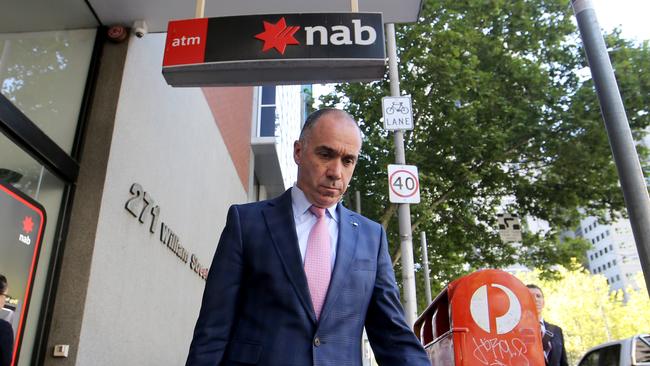NAB ‘self-assessment’ identifies risk management, executive weaknesses
NAB’s self-assessment finds ‘significant shortcomings’ in risk management and says executives have lacked ‘intensity’.

National Australia Bank has found “significant shortcomings” in its management of risks, including conduct, and that executives did not apply “sufficient intensity and urgency” to longstanding issues.
NAB’s “self-assessment” of governance, accountability and culture, submitted to the Australian Prudential Regulation Authority, recommends 26 initial actions to strengthen the bank’s governance. It spans areas including conduct, systems and culture.
The document follows APRA’s damning report in May into rival Commonwealth Bank’s culture, systems and governance. The regulator then pushed other banks to undertake their own assessment.
“Weaknesses were found in areas such as conduct, compliance and the integrated management of operational risk,” the NAB report said.
“NAB did not bring enough focus to customer outcomes, did not set exacting enough standards, and did not move quickly enough to address weaknesses when they were recognised.”
NAB has been in the firing line at the banking royal commission for a raft of scandals, including charging customers fees for services that weren’t provided.
The bank’s chief executive Andrew Thorburn and chairman Ken Henry fronted commissioner Kenneth Hayne this week to talk about the bank’s confessions of wrongdoing and how it would make leaders accountable.
The bank’s board has faced renewed anger from investors for not cutting bonuses enough this year, with at least one proxy adviser threatening to vote against its remuneration report.
NAB’s self-assessment raises a host of issues, including implicating its executive leadership team for not tackling problems head on.
“The ELT (executive leadership team) has not applied sufficient intensity and urgency to a number of longstanding issues and known weaknesses, particularly when these crossed divisional boundaries, contributing to slow progress on resolution,” the report said.
Mr Thorburn yesterday met with the bank’s top 70 leaders and they discussed that the report was necessary as a road map for change. The leaders were given a copy and asked by Mr Thorburn “to own the implementation” of changes.

The self-assessment also found NAB’s pay and performance management “didn’t consistently and visibly sanction” poor behaviour or reward good behaviour.
“NAB’s approach to assessing behaviours and outcomes, and rewarding or disciplining individuals, hasn’t historically been robust and targeted enough. This has undermined the development of NAB’s desired culture,” it said.
Mr Henry this week conceded to the royal commission that it may take a decade for NAB’s culture to be reformed.
His foreword to the report said NAB’s self-assessment in some areas went beyond issues raised at CBA by the prudential regulator.
“Many of the findings from the CBA review resonate at NAB. Many do not. And there are other issues that we have identified that may be unique to NAB, but of no lesser importance,” he said.
“We must take action to better manage our non-financial risks. And we are. We are tackling complexity and investing to ensure our systems and processes support our people to consistently deliver regulatory compliance.
“The self-assessment has identified the need for further improvements across the bank. These too will be actioned.”
The report also made observations on NAB’s culture.
“In most instances, NAB’s people acted in accordance with the bank’s values. However, five cultural inhibitors were evident in the situations where the bank did not live its desired culture.”



To join the conversation, please log in. Don't have an account? Register
Join the conversation, you are commenting as Logout